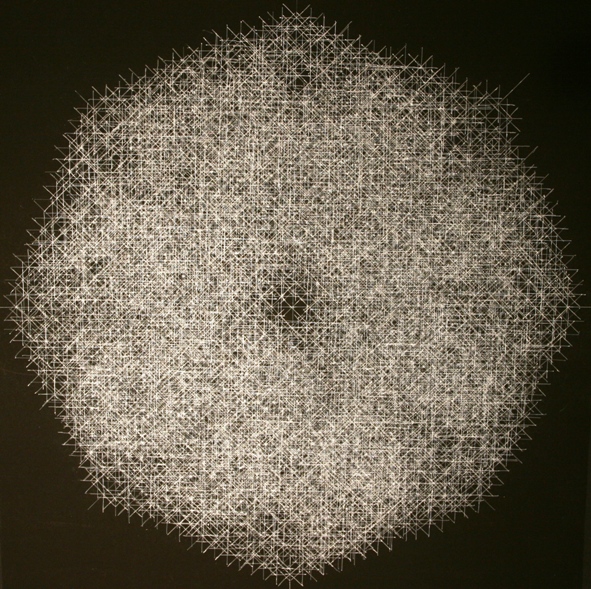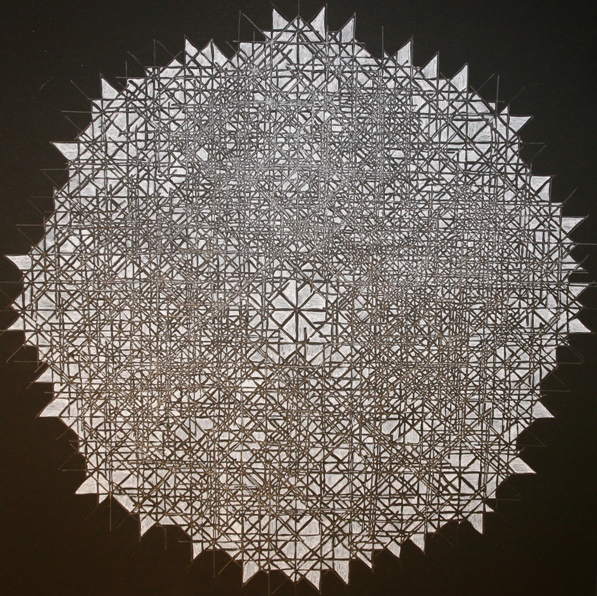Susan Happersett |
"Chaos Lines"
Ink on paper,
24” x 24”,
2009.

Chaos Theory shows that even within apparent disorder there can
often be found both order and structure. This drawing begins with
8 spokes drawn on the Cartesian Co-ordinate System. The line
segments fall on the x-axis and y-axis and the y=x and y=-x lines.
Each spoke becomes the starting point for a new 8-spoke shape but
the line segments are half as long as the original spokes. This
process continues through four iterations, creating a circular
fractal network of lines. I use differently sized stencils, each
with a small margin of error. The errors accumulate, creating
cloud-like, chaos-derived drawings.
"Chaos White-out"
Ink on paper,
24” x 24”,
2009
.

The starting point for this drawing is a Chaos Line drawing, but I
only perform three of the four iterations executed for Chaos Line.
This leaves an interesting pattern of negative space that I filled
in with white ink, making the actual lines fade into the
background. This provides another way to see structure and pattern
in what at first appears to be chaotic.
Susan Happersett, Artist
Jersey City, NJ
As an artist, my goal is to express the beauty and grace I find in
Mathematics. Through my drawings I hope to uncover the intrinsic
aesthetic elements of mathematical sequences, functions,
symmetries and proportions in a way that is accessible to anyone
regardless of their mathematical knowledge. I use an algorithmic
process to generate my drawings. All decisions for each work are
made before I begin to draw. These drawings are meant to
illuminate the aesthetics of both the specific mathematical
subject matter as well as the algorithmic process. In my Chaos
Drawings, I visually interpret the phenomenon of Chaos Theory,
illustrating that within apparent disorder there can be found both
order and structure. Each drawing begins with an 8-spoke pattern
and continues with multiple iterations in decreasing scale using
stencils with small margins of error. This creates cloud-like
images; only after close study you see the underlying patterns.